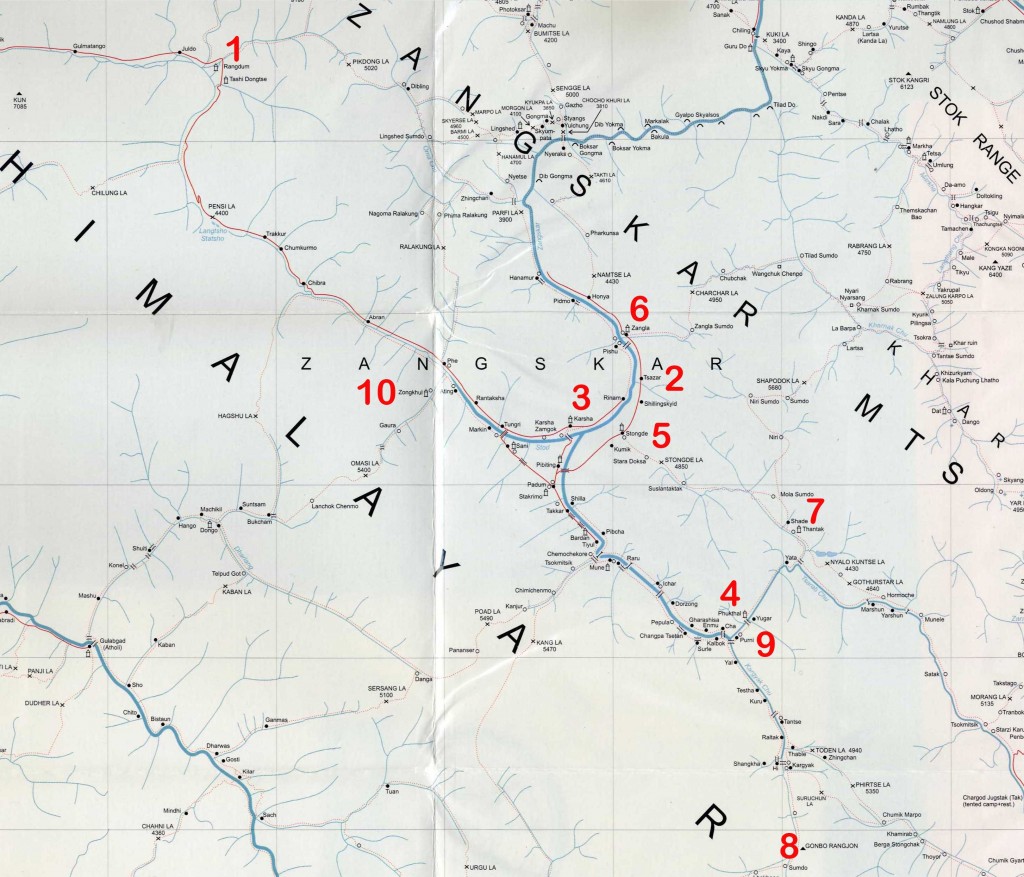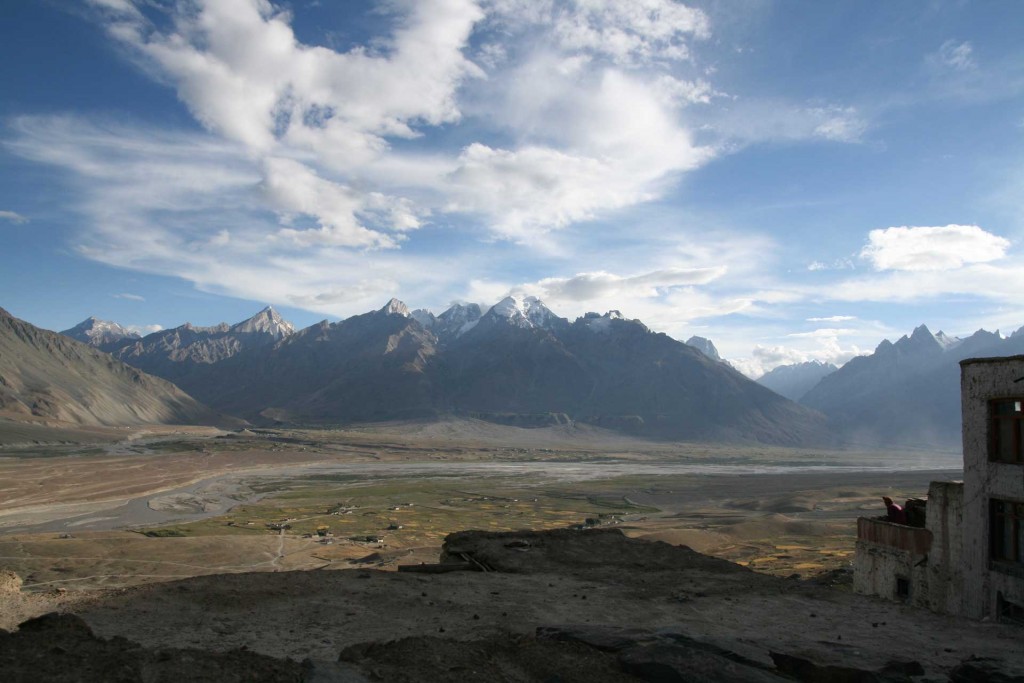When you drive from Srinagar to Leh, Sonmarg is the last stop of Kashmir District. From here starts the territory of Ladakh. Situated at an altitude of 2743 m above sea level, Sonmarg is absolutely true to its name, which means 'Meadow of Gold'. The moment you enter Sonmarg, the first thing that you will notice will be the snow-covered mountain that forms the backdrop of the town. Covered with alpine trees from all sides, Sonmarg has few of the loveliest flower collection in J & K. In winters though, the town is covered with snow giving it an altogether different charm of white. The town has become famous for the many excursion option that it offers, mainly short walks and trek routes to nearby stunning areas. The most famous trek is definitely the one that takes you to Amarnath caves. In fact Baltal which is just besides Sonmarg is used asa base camp for starting the holy Amarnath yatra.
Location: 81-km from Srinagar, Kashmir Region, J&K
How to spend time/Attractions: Trekking, Alpine Skiing, Angling, Long walks, White water rafting, Sledging, Horse riding, Photography, Sightseeing, etc.
Best Time to Visit: May To September, November to February
Places to Visit:
Thajiwas Glaciers: Thajiwas is one of the most popular short walks from Sonamarg and a major attraction during the summer months. It is 4-km route to Thajiwas, a small valley at the foot of the Sonamarg glacier. A path leads up to the Shakhdar hill, overlooking the glacier from the northeast. It is dangerous to climb the steep slope leading up to the glacier. The miniature plateaus, snowfields, pines and islets add to the charm of Thajiwas. Thajiwas is a short and interesting walk from Sonamarg in Jammu Kashmir. During daytime one can take the 3-mile horseback ride west, then south, to the Thajiwas glacier.
BALTAL CAMPING BASE:
This beautiful meadow is right at the foot of the Zoji La pass and thus is the final place in Kashmir. The river from the foot of the Amarnath glacier meets the Indus near Baltal. It stands at a height of 2,743m and during the Amarnath pilgrimage there are tents set up here. It is possible to walk to the Amarnath cave, more usually approached from Pahalgam, in one day. Check about conditions before departing, though. The weather can be treacherous and at other times melting snow and ice make the route very dangerous. There's now a jeep road most of the way to the cave. The turn off to Baltal is at 94-km on the Leh road, and then it's 3-km or so downhill.
Zajibal Pass: Zajibal pass is also known as gateway to Ladakh, Jammu and Kashmir. Here you can have a clear view of Gangabal Lake 2,000 feet below, 16,872-foot Haramukh above. For this alpine trek over the Nichinai to Gangabal Lake and down the Wangat valley, you will need about seven days. This is the most dangerous pass in the region.
Nilagrad: Amongst the many spots worth visiting is the Nilagrad. Nilagrad is a colony of the Baltics where a small stream meets the Mountain River Sindh. It is 6 kms. Away from Sonmarg. The water of the river is reddish in colour. The Baltics believe that the reddish color of water is due to its curative power of many diseases. So, inhabitants of the colony visit this river every Sunday.
Krishnasar Lake: is located near the famous hill station of Sonmarg in Srinagar District. It lies at an altitude of 3,801m, and is popular for trout fishing. The lake with its scenic and peaceful atmosphere is perfect for holidays. This picturesque lake can be accessed through the Nichinai Pass which is at an altitude of 4084 m. nearby lies another lake, called Bisansar Lake noted for its natural beauty. Best time to visit the lake and its surroundings is during mild summer from April to June.
Location: 81-km from Srinagar, Kashmir Region, J&K
How to spend time/Attractions: Trekking, Alpine Skiing, Angling, Long walks, White water rafting, Sledging, Horse riding, Photography, Sightseeing, etc.
Best Time to Visit: May To September, November to February
Places to Visit:
Thajiwas Glaciers: Thajiwas is one of the most popular short walks from Sonamarg and a major attraction during the summer months. It is 4-km route to Thajiwas, a small valley at the foot of the Sonamarg glacier. A path leads up to the Shakhdar hill, overlooking the glacier from the northeast. It is dangerous to climb the steep slope leading up to the glacier. The miniature plateaus, snowfields, pines and islets add to the charm of Thajiwas. Thajiwas is a short and interesting walk from Sonamarg in Jammu Kashmir. During daytime one can take the 3-mile horseback ride west, then south, to the Thajiwas glacier.
BALTAL CAMPING BASE:
This beautiful meadow is right at the foot of the Zoji La pass and thus is the final place in Kashmir. The river from the foot of the Amarnath glacier meets the Indus near Baltal. It stands at a height of 2,743m and during the Amarnath pilgrimage there are tents set up here. It is possible to walk to the Amarnath cave, more usually approached from Pahalgam, in one day. Check about conditions before departing, though. The weather can be treacherous and at other times melting snow and ice make the route very dangerous. There's now a jeep road most of the way to the cave. The turn off to Baltal is at 94-km on the Leh road, and then it's 3-km or so downhill.
Zajibal Pass: Zajibal pass is also known as gateway to Ladakh, Jammu and Kashmir. Here you can have a clear view of Gangabal Lake 2,000 feet below, 16,872-foot Haramukh above. For this alpine trek over the Nichinai to Gangabal Lake and down the Wangat valley, you will need about seven days. This is the most dangerous pass in the region.
Nilagrad: Amongst the many spots worth visiting is the Nilagrad. Nilagrad is a colony of the Baltics where a small stream meets the Mountain River Sindh. It is 6 kms. Away from Sonmarg. The water of the river is reddish in colour. The Baltics believe that the reddish color of water is due to its curative power of many diseases. So, inhabitants of the colony visit this river every Sunday.
Krishnasar Lake: is located near the famous hill station of Sonmarg in Srinagar District. It lies at an altitude of 3,801m, and is popular for trout fishing. The lake with its scenic and peaceful atmosphere is perfect for holidays. This picturesque lake can be accessed through the Nichinai Pass which is at an altitude of 4084 m. nearby lies another lake, called Bisansar Lake noted for its natural beauty. Best time to visit the lake and its surroundings is during mild summer from April to June.




























